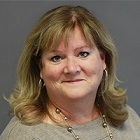
If you are responsible for your financial institution’s allowance for loan and lease losses (ALLL) and the transition to the current expected credit loss, or CECL, you might be “eating and sleeping” CECL these days. Phrases like “reasonable and supportable forecast” and the “WARM method” may be second nature to you. They may be unfamiliar, on the other hand, to your bank or credit union’s board of directors, given their oversight of a wide array of issues related to the institution.
Explaining CECL and your institution’s transition progress to your board of directors is important. The board needs enough information to understand the potential impact to capital and earnings and to be able to communicate with shareholders and other interested parties. In a recent webinar, Abrigo Senior Advisor Paula King, CPA, and Brandon Quinones, Abrigo Manager of Credit Consulting, outlined several suggestions for explaining the complexities of CECL to the board. They also cautioned against some approaches that can make it more difficult to convey information in a straightforward and clear manner.
Below are some of their dos and don’ts for effectively explaining CECL to the bank or credit union board:
Do This: Focus on the key concepts your board needs to understand.
Not That: Go into so much detail early on that board members lose focus on what’s important about the changes.
Many financial institutions, especially SEC-registrants that need to comply with CECL by Q1 2020, are moving along the path of CECL implementation at a healthy pace, King noted. That can make explaining the status tricky when the board doesn’t know the basics of CECL. Of course, most board members are more interested in what the results of the CECL implementation will be than anything else. “But they also need to be well versed in discussing some of the high-level components of CECL so that when they have shareholder conversations and conversations with regulators, etc., they can at least talk intelligently on the matter,” King said. She recommended high-level educational sessions or at least including CECL as an agenda item on regular board meetings. King and Quinones said a helpful way to “translate” CECL to the board is to explain how it is different from the current incurred-loss method of accounting for credit losses. Three of the biggest differences are:
- CECL Life-of-loan concept: “Explain to them that unlike today, where we have an event that occurs and we start reserving, CECL takes us all the way back to origination or the underwriting of the loan and carries us through to an expected life,” King said. “So we’re encompassing not only the weighted average lives of our loans but ideally, we’re encompassing a lot of different economic conditions. The main thing to drive home here is we’re encompassing more data, more history of chargeoffs as opposed to what we’re doing today.”
- CECL’s economic and credit conditions forecast component: In addition to adjusting estimates for current conditions, which are included in the ALLL today, CECL requires the use of pertinent indices over a manageable forecast horizon to estimate lifetime losses on loans – another big difference.
- Potential for significant reserve adjustment on Day 1: King said that while every institution will be different in terms of the impact CECL has on the reserve on Day 1, it’s a good idea to prepare the board for the potential for a significant increase. “It won’t always be an increase, but there certainly is a potential for a significant increase in the actual reserve level,” King said. She and Quinones also walked webinar participants through an example to show the board the impact on the balance sheet and earnings related to any reserve adjustment.
Do This: Dispel the myths early on.
Not That: Make definitive statements about what models you can use or how CECL will impact the institution too early in the implementation process.
Quinones noted that many staffers who are preparing the ALLL and who have followed CECL since the Financial Accounting Standards Board began discussing it more than 5 years ago probably remember the rumors circulating when it was issued in 2016. Some speculation soon after suggested reserves would increase as much as 80%, he said. Early on, the chatter was also that financial institutions would be able to use the vintage analysis methodology for all types of portfolios. “Put yourself in the shoes of your board as they’re going through this learning process,” he said. They may have some of the same misconceptions. Explain that since the earlier days, many institutions have learned that rumors and myths were just that.
At the same time, banks and credit unions are still learning a lot about exactly how to implement CECL and how it will impact their particular institutions, so King and Quinones cautioned against making definitive statements to the board too early. While the main theoretical components of CECL indicate a greater likelihood that reserves will increase, this is not always the case, King said. Board members could benefit from hearing, “Let’s wait until we actually see what the results look like in the model.”
Quinones reiterated that point. “I’ve heard institutions say their board is convinced one way or the other: convinced [the reserve] will go up or convinced it will go down,” he said. “At the end of the day, it’s important not to go into this with too great of an emphasis on one way or another, or else you’re probably going to be modeling with confirmation bias.”
Do This: Emphasize that your CECL model may evolve as more data becomes available.
Not That: Leave board members with the impression that CECL is a one-and-done exercise.
Another key point about CECL implementation to make with financial institution board members is that the first deadline is important, but it won’t end the work. King and Quinones noted that some banks and credit unions don’t have robust data heading into CECL deadlines, so they will be capturing data now and in the next few years that may change the allowance methodology used, as well as the impact. Others haven’t had many losses in recent years – either because they have new products or segments, or because they simply didn’t have losses. Remind the board that as the data changes and is refined, so potentially will the CECL methodology and/or the pooling structures.
In fact, board members may ask staff how they know the methodology selected is appropriate for the financial institution. “Hopefully, you’ve done some analytics to determine what works best for you,” King said. “A lot of that’s going to depend on the data you have available. But do we anticipate adjustments? Absolutely.”
As auditors and regulators work their way through implementation and work with financial institutions, changes will certainly come. “As CECL is implemented and models are tested, CECL may look very different in five years than it will at the compliance date,” King added.
Learn more about how to inform your board of directors about CECL, including key talking points to cover and several questions you might get from board members about CECL, from the webinar: “CECL: Synthesizing Complexities to a Board.”
About the Author

Mary Ellen Biery is a Senior Writer and Content Specialist at Abrigo.